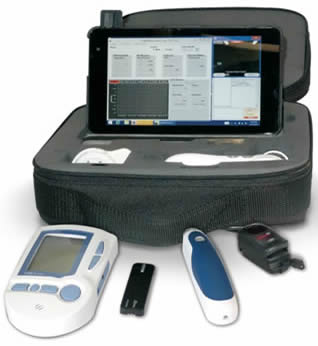|
In the movies, when a medical emergency strikes in the air, the first question from the crew over the PA inevitably seems to be, “Is there a doctor on board?”
For commercial airlines, the chances of having a medical professional on board are much greater than in our business aviation world. But now, thanks to the proliferation of “high-speed
data” equipped business jets, a company called Aircare International is literally beaming a doctor aboard when the unthinkable occurs and medical help is desperately needed.
According to Satcom Direct, the leader in business aviation telephony and data solutions, an estimated one-third of the worldwide business aviation fleet is equipped with some form of
high-speed data system. However, high-speed data on the aircraft has limitations depending on the type of system installed. In general, satellite-based systems achieve only 3g-type
speeds of up to 256 kbps to and from the aircraft. Ku band satellite systems have much faster download speeds, but only 512 kbps transmitting from the aircraft. Because of these
restrictions, onboard medical help has since been limited to a telephone call or streaming of vital signs to a call center.
| Aircare International has broken through these limitations with their Aircare Remote Viewing Station (RVS): a combination of hardware and software components contained within a small
sleek carrying case that allows the doctor to see and hear the patient, while graphically viewing the patient’s vital signs.
The RVS was designed specifically to operate in low and wavering
bandwidth environments, like those aboard the aircraft.
It effectively transmits and receives audio, video and vital medical data from a series of wireless diagnostic devices such as a digital
blood pressure cuff, an electro cardiogram, thermometer, pulse-oximeter and
glucometer. |
 |
The unit also has a wireless macro-cam with attachments for looking into the ears, eyes, nose
and throat. The unit uses a peer-to-peer connection and 256-bit encryption for
HIPPA-compliant data transmission.
Demonstrating the capability, Karl
Kamps, the director of Aircare International’s telemedical product, Aircare Access Assistance, unzips a small padded case and reveals a compact
touch-screen monitor inside. He touches a button and the system turns on. “It’s as simple as a single button push and it’s ready,” says
Kamps. With the touch of an icon on the screen,
he is suddenly face-to-face with Dr. Keith Boniface who runs the emergency telemedical department at the prestigious George Washington University in Washington, DC -the same
hospital to which the President of the United States is whisked off in the case of a medical emergency.
Boniface explains the importance of the RVS from an emergency physicians point of view. “For ER physicians working remotely with a patient, seeing and hearing this individual is
incredibly more important than say, receiving anonymous streaming vital signs.” said Boniface, “We can tell so much just by talking with the individual and watching them. For example,
respiratory rate, skin tone, facial expressions, speech coherence and ranges of motion are things that can’t be conveyed over the telephone during a traditional telemedical call.”
Boniface also describes the benefit of seeing and hearing the caregiver. “Often times the crewmember can use some coaching,” he explains, “For example, we can physically show them
how to use a piece of assessment or treatment equipment like a blood pressure cuff or an oxygen mask. Showing them how too it right is invaluable.”
Kamps says that the beauty of the RVS is that it is simple, discrete and non-invasive to the patient. “There is a certain sense of comfort for the individual who does not have to remove
their clothing to get an ECG or a blood pressure reading. There are no wires. They aren’t attached to some machine. There is also comfort in knowing that help is right there next to them,
even when they are over the middle of the Pacific Ocean.”
The Aircare RVS is available through Aircare Access Assistance. The unit retails for $18,000 and includes a one-year subscription to Aircare’s telemedical service and free-of-charge
inflight medical training.
|
